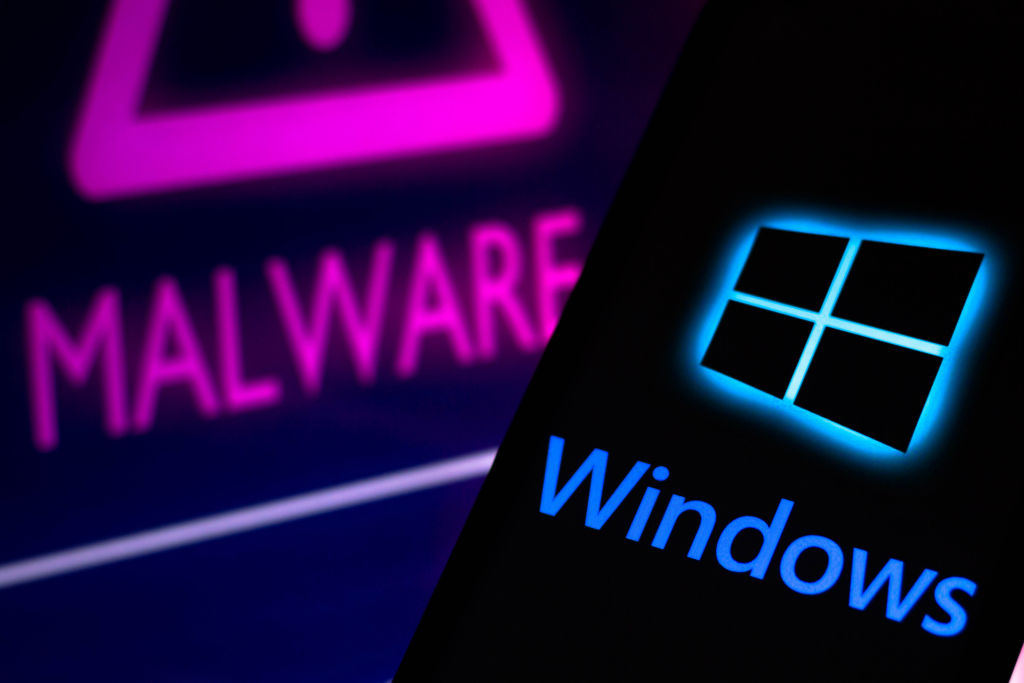Decade-old malware strains top annual list of most pervasive business exploits
Allied cyber security authorities say the most active strains of 2021 have been in operation for longer than five years, and are being constantly developed


US and Australian cyber security authorities have jointly revealed the top malware strains that targeted organisations in 2021, with two of them in operation for longer than a decade.
The US’ CISA and Australia’s ACSC said the most pervasive strains included remote access trojans (RATs), banking trojans, information stealers, and ransomware.
Qakbot and Ursnif are two of the top strains that have been in operation for the longest. Both authorities said this is because they have been under active development, with operators consistently adding new capabilities and methods to evade detection.
Most strains in the list have been in operation for longer than five years and their respective codebases evolved over that time into various variations.
The most prolific of the bunch, the authorities said, were stealers of financial or personal information, and ransomware.
The top 11 malware strains of 2021
| Malware strain | Type of malware | Active since | Delivery method |
| Agent Tesla | Information stealer, RAT | 2014 | Phishing (attachments) |
| AZORult | Information stealer | 2016 | Phishing, exploit kits, infected websites |
| Formbook | Information stealer | 2016 | Phishing (attachments) |
| Ursnif | Banking trojan | 2007 | Phishing (attachments) |
| LokiBot | Trojan, information stealer | 2015 | Phishing (attachments) |
| MOUSEISLAND | Macro downloader | 2019 | Phishing (attachments) |
| NanoCore | RAT | 2013 | Phishing (attachments), cloud storage |
| Qakbot | Multi-use trojan | 2007 | Phishing (attachments, hyperlinks, embedded images) |
| Remcos | RAT | 2016 | Phishing (attachments) |
| Trickbot | Trojan | 2016 | Phishing (hyperlink) |
| GootLoader | Malware loader | 2020 | Compromised websites |
Overview of 2021's most pervasive malware strains
Agent Tesla
Around since 2014, the powerful tool can be used to steal information from email clients, web browsers, and file transfer protocol (FTP) servers, as well as capture screenshots and video from a desktop environment.
AZORult
An information stealer that can be found available on underground hacking forums, AZORult is under constant development, the authorities said, and its capabilities include stealing browser data, user credentials, and cryptocurrency information.
Sign up today and you will receive a free copy of our Future Focus 2025 report - the leading guidance on AI, cybersecurity and other IT challenges as per 700+ senior executives
Formbook
Formbook is a malware strain that's consistently changed, according to the latest threats published in the common vulnerabilities and exposures (CVS) list, aiming to infect systems that have been left unpatched to the latest threats.
It's capable of keylogging and capturing passwords, and has been used in a variety of attacks in the past year such as those specifically targeting corporate email inboxes.
Ursnif
The banking Trojan Ursnif has been around since 2007, tying with Qakbot as the longest-running malware strain on the list. It has evolved to adopt a persistence mechanism, meaning that it can live on a system after it has rebooted, and can also avoid sandboxes and virtual machines, the authorities said.
Lokibot
This Trojan is designed to various types of steal sensitive information, such as user credentials and those to access cryptocurrency wallets. In circulation since 2015, it had a notable variant in 2020 that disguised itself as a launcher for the popular video game Fortnite.
MOUSEISLAND
This is one that's likely to drop off the list next year now Microsoft has blocked VBA macros by default, but the macro downloader has been prolific since 2019 and is thought to be used in the initial stages of some ransomware attacks.
NanoCore
The RAT NanoCore can allow attackers to spy on victims through webcams while also doubling as a stealer of passwords and emails. It's one of the oldest strains on the list beginning operation in 2013.
Qakbot
Qakbot was originally a banking Trojan, but since its 2007 inception, its capabilities have evolved to include data exfiltration and the capacity to deliver other malicious payloads. It’s modular in nature, allowing attackers to tailor its capabilities to their needs.
Remcos
A lexical blend that’s short for Remote Control and Surveillance, Remcos is presented as a legitimate penetration testing tool but has been abused by cyber attackers, much like Cobalt Strike and more recently Brute Ratel C4. It can steal personal data and login credentials, and was used heavily in COVID-19-themed phishing campaigns.
TrickBot
This Trojan is thought to be operated and maintained by a sophisticated threat group, and has been used in the past as the initial exploit to deploy Conti and Ryuk ransomware. It has also been used against healthcare organisations to steal data and disrupt services.
Gootloader
Around since 2020 and now a multi-payload malware platform, Gootloader has evolved in recent years from a simple malware loader, typically associated with GootKit malware. It often provides attackers with the initial access exploit, usually via search engine poisoning.
What mitigations can your business deploy?
The authorities recommend reviewing and implementing all the necessary mitigations to defend against these malware strains - the ones targeting businesses the most.
The full list of instructions can be found in the complete joint advisory issued by CISA and ACSC this week, but recommendations include updating software against known vulnerabilities, enforcing the use of multi-factor authentication (MFA) across the organisations, monitor use of remote desktop protocol and maintain offline backups of data.

Connor Jones has been at the forefront of global cyber security news coverage for the past few years, breaking developments on major stories such as LockBit’s ransomware attack on Royal Mail International, and many others. He has also made sporadic appearances on the ITPro Podcast discussing topics from home desk setups all the way to hacking systems using prosthetic limbs. He has a master’s degree in Magazine Journalism from the University of Sheffield, and has previously written for the likes of Red Bull Esports and UNILAD tech during his career that started in 2015.
-
 The deepfake threat to mobile app authentication: What CISOs need to know
The deepfake threat to mobile app authentication: What CISOs need to knowIndustry Insights Deepfakes threaten mobile facial authentication, demanding urgent action from CISOs
-
 Tired of legal AI tools that overpromise but underdeliver? The secret to success is in your firm’s data
Tired of legal AI tools that overpromise but underdeliver? The secret to success is in your firm’s dataSponsored Don't let legal AI tools overpromise and underdeliver: the secret to success isn't the software, but building a secure, stable, and connected data foundation that transforms your firm's complex, siloed information into structured knowledge.
-
 Volkswagen confirms security ‘incident’ amid ransomware breach claims
Volkswagen confirms security ‘incident’ amid ransomware breach claimsNews Volkswagen has confirmed a security "incident" has occurred, but insists no IT systems have been compromised.
-
 The number of ransomware groups rockets as new, smaller players emerge
The number of ransomware groups rockets as new, smaller players emergeNews The good news is that the number of victims remains steady
-
 Teens arrested over nursery chain Kido hack
Teens arrested over nursery chain Kido hacknews The ransom attack caused widespread shock when the hackers published children's personal data
-
 NCA confirms arrest after airport cyber disruption
NCA confirms arrest after airport cyber disruptionNews Disruption is easing across Europe following the ransomware incident
-
 Cyber professionals are losing sleep over late night attacks
Cyber professionals are losing sleep over late night attacksNews Hackers are biding their time and launching attacks when businesses can’t respond
-
 Prolific ransomware operator added to Europe’s Most Wanted list as US dangles $10 million reward
Prolific ransomware operator added to Europe’s Most Wanted list as US dangles $10 million rewardNews The US Department of Justice is offering a reward of up to $10 million for information leading to the arrest of Volodymyr Viktorovych Tymoshchuk, an alleged ransomware criminal.
-
 Jaguar Land Rover “did the right thing” shutting down systems to thwart cyber attack
Jaguar Land Rover “did the right thing” shutting down systems to thwart cyber attackNews The attack on Jaguar Land Rover highlights the growing attractiveness of the automotive sector
-
 Ransomware attack on IT supplier disrupts hundreds of Swedish municipalities
Ransomware attack on IT supplier disrupts hundreds of Swedish municipalitiesNews The attack on IT systems supplier Miljödata has impacted public sector services across the country